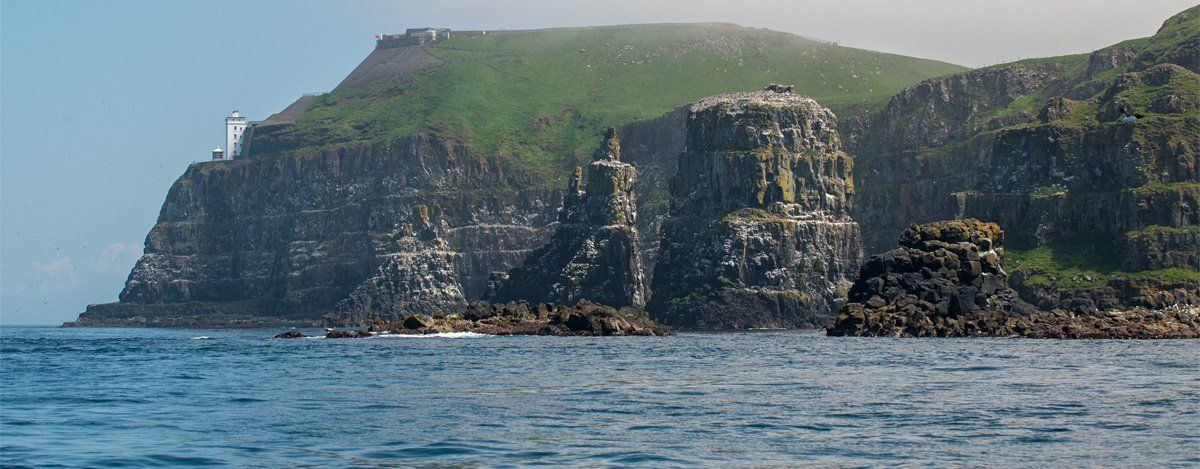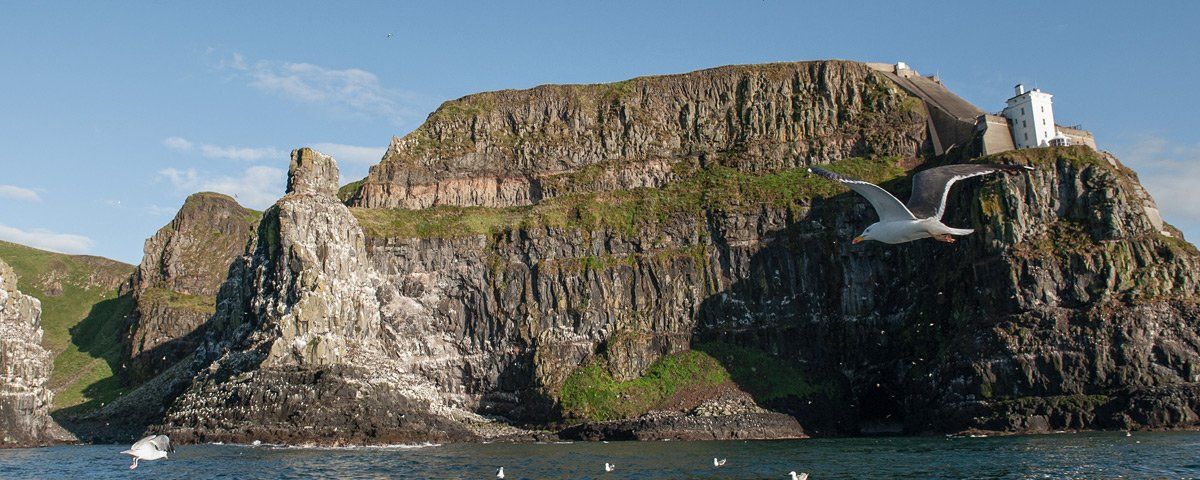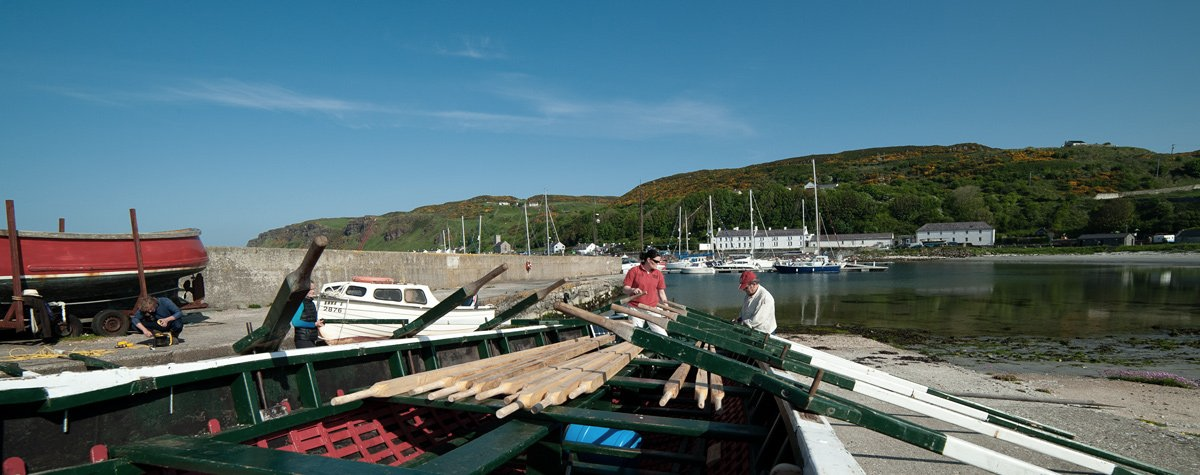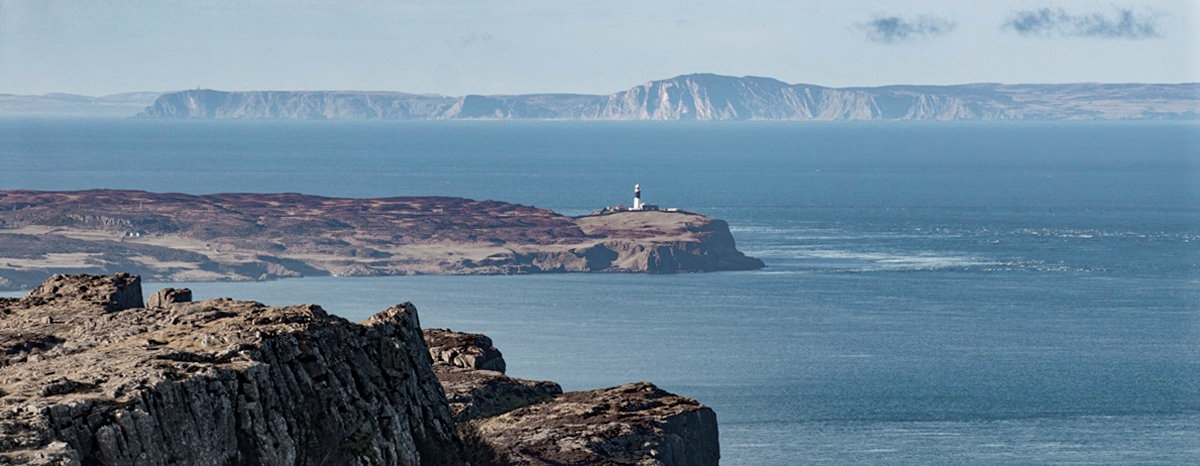HMS Drake
H.M.S. Drake
The image: US Library of Congress print division. On the morning of October 2nd 1917, HMS Drake was several miles off the north-west of Rathlin Island, on routine escort duties with convoy HH 24 inbound from America. The area was frequented by German U boats who were engaged in both mine laying and convoy attacks in the Western and Northern Approaches as part of an overall German strategy to blockade convoy supplies reaching the United Kingdom. U79, a mine laying submarine was on active duty around the north-west of Ireland and the western Scottish Isles at the time. The U-Boat located HH 24 in the early morning, found HMS Drake in her sight and fired one of her four torpedoes, the resulting explosion killed 19 seamen though the cruiser remained afloat.
After the attack and as normal procedure, the convoy dispersed, the remaining naval and auxiliary escorts including the HMS Brisk, a type H (Acorn) destroyer were deployed to follow up on the dispersed ships, some through Rathlin Sound and others in the North Channel. The 2,372 ton Lugano, loaded with cotton and steel from Virginia came into the Sound and was hit on her starboard side by one torpedo fired from U 79, the explosion ripped a large hole in the hull resulting in her sinking rapidly with no loss of life. Shortly afterwards HMS Brisk made a sweep through the Sound and was hit by either torpedo or ran into a mine which struck amidships causing a catastrophic explosion.
This broke the ship in two, the bow section sank in the Sound and the stern section was eventually towed into Londonderry, the explosion killed thirty-one seamen. Both the Brisk and Lugano lie within 3km of each other - although there is no evidence to say that U79 torpedoed HMS Brisk, the proximity of the two attacks would suggest that she may have lay in wait and done so. If so it would have been a major achievement for a U-Boat Captain to claim a Cruiser, Destroyer and a 2,350-ton merchant ship within a few hours of each. The crippled Drake under the command of Captain S. H. Radcliffe was escorted into Church Bay by HMS Martin and other auxiliary ships where she was anchored.
There were suggestions that to save her an attempt was going to be made to beach her in Church Bay, unfortunately, the degree of the list became critical and she was abandoned to capsize in eighteen metres of water a few hundred metres from the shore. There were no casualties as a result of the capsizing and the Admiralty announced her loss on October 4th, though no reference was made to HMS Brisk. HMS Drake was built in 1902, a 'Drake' class armoured cruiser, at 23 knots she was one of the fastest cruisers in the world at that time. Her armaments included two primary 9.2-inch centre line turrets, sixteen secondary 6-inch single barbettes, twelve auxiliary twelve pounders, three auxiliary three pounders and two eighteen-inch submerged torpedo tubes.
Other ships in her class were the Good Hope, King Alfred and Leviathan. She became the flagship of Rear Admiral Battenburg in 1905 and her stations included the Mediterranean Grand Fleet from 1914-15 and the North American and West Indies theatre of operations from 1915-17. Incidentally, in August, 1914 shortly after the declaration of war, she escorted the Harland & Wolff (Belfast) built 'Olympic' (sister ship of the Titanic) into Liverpool. the Olympic had sailed empty from New York, HMS Essex escorted her for part of the crossing and she was met by the Drake in the Northern Approaches and escorted to port.
HMS Brisk was built in 1910, a type H (Acorn) destroyer with a top speed of 27 knots. Range was 2,000 miles at 13 knots. Armaments included - two primary 4 inch (QF) guns, two secondary 3-inch QF guns and two 21 inch torpedo tubes.S.S. Lugano was a cargo steamer built in 1917 by Irvine's of Hartlepool and owed by the Gulf Line. Gross weight: 2,350 ton. She had left Norfolk, Virginia with convoy HH24 and was bound for Liverpool with cotton, steel and alcohol. Submarine U79 was a Class: UE, Type: Ocean-going mine-laying submarine and was launched on 9th April, 1916, she was commissioned into the German Imperial Navy on May 25th, 1916.
Displacing some 832 tons, U79 had a range of 8,000 nautical miles and a surface speed of 10.6 knots (submerged 7.9). Her armaments included - 34 UE150 type mines, one fore and one aft torpedo tubes, four 50 cm torpedoes and an 8.8cm mounted gun on her deck. She had a crew complement of 32 seamen. U79 survived the war and was interned on 11th November 1918 and subsequently surrendered - all the confiscated U-Boats were either scrapped or divided amongst the allies. On November 21st, 1918, as part of this dispersal, U 79 was handed over to the French Navy.
The Drake did not lie undisturbed, on the 4th November 1962, the 595 ton 'Ella Hewitt' skippered by William Gregson fouled the wreck while leaving Church Bay and within eighteen hours had sunk adjacent to her. Owned by the Hewitt Fishing Company of Fleetwood, the 'Ella Hewitt' was built in 1953 and at 170 ft was one of largest trawlers operating out of Fleetwood. Many stories surround the sinking and why she hit the wreck, a relative of mine listened to the May Day call on his wireless set in Ballintoy, the Portrush lifeboat came to her assistance and took the crew off with no casualties. As a young teenager, I remember the frequent visits of Fleetwood trawlers to Ballycastle.
We would go down to the quay to watch these visitors come ashore to make what I was told was a 'last port of call' to get supplies they needed before heading out for their long and arduous time in the Icelandic fishing grounds. In my innocence, I could never figure out why they forgot to put those supplies onboard in Fleetwood. There are many local stories of skipper's being carried out of pubs by the crew and taken down to the quay in the back of a van, the first mate or whoever was able, having to take the trawler out from the Bay. Another memorable story is that of a local landlord being invited by the skipper and crew to continue the evening's session aboard ship, he eventually came round on his way to Iceland - the trawler made a detour and dropped him off on the Faroes.
All Rights Reserved | Art Ward
© 2024









